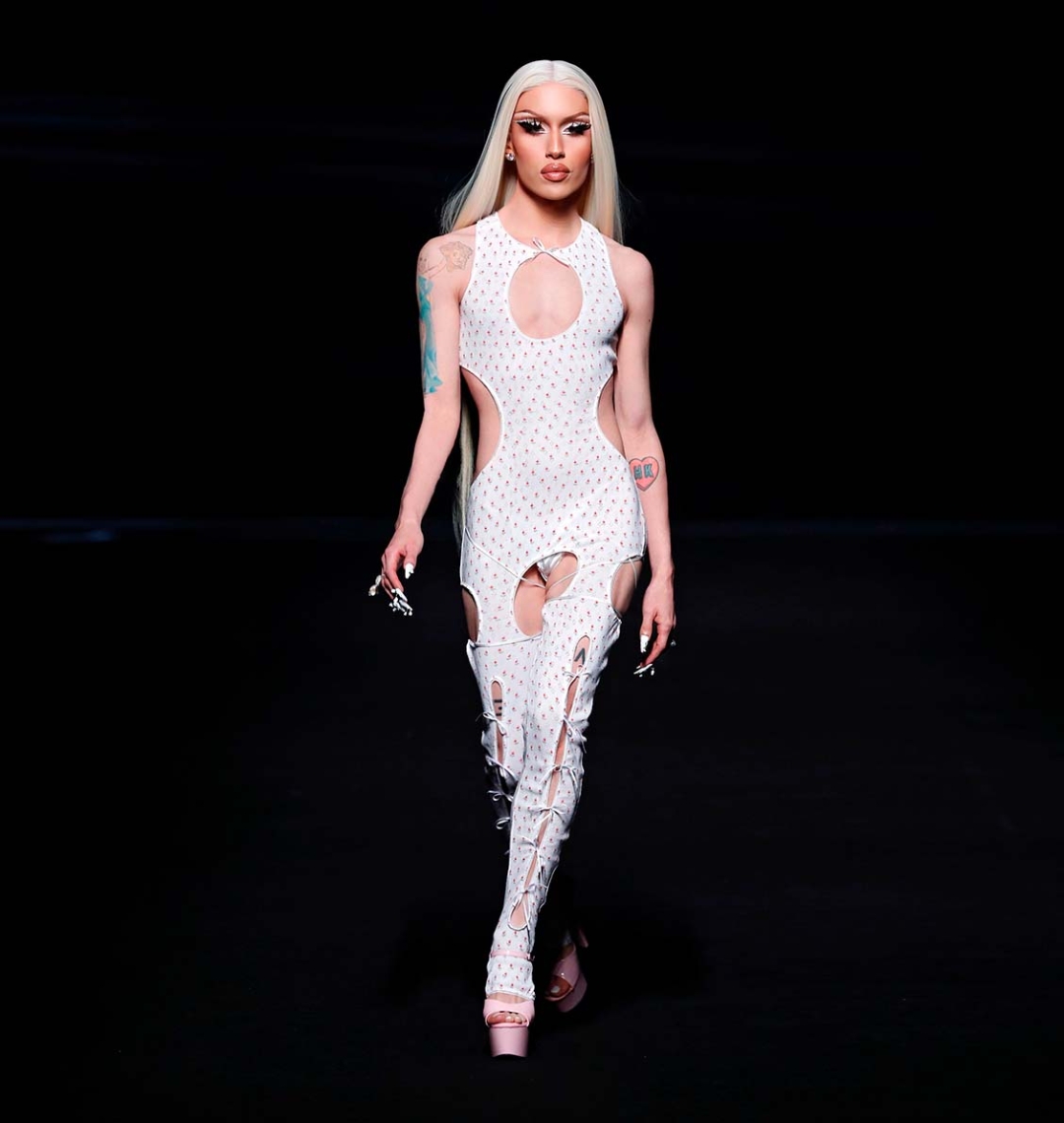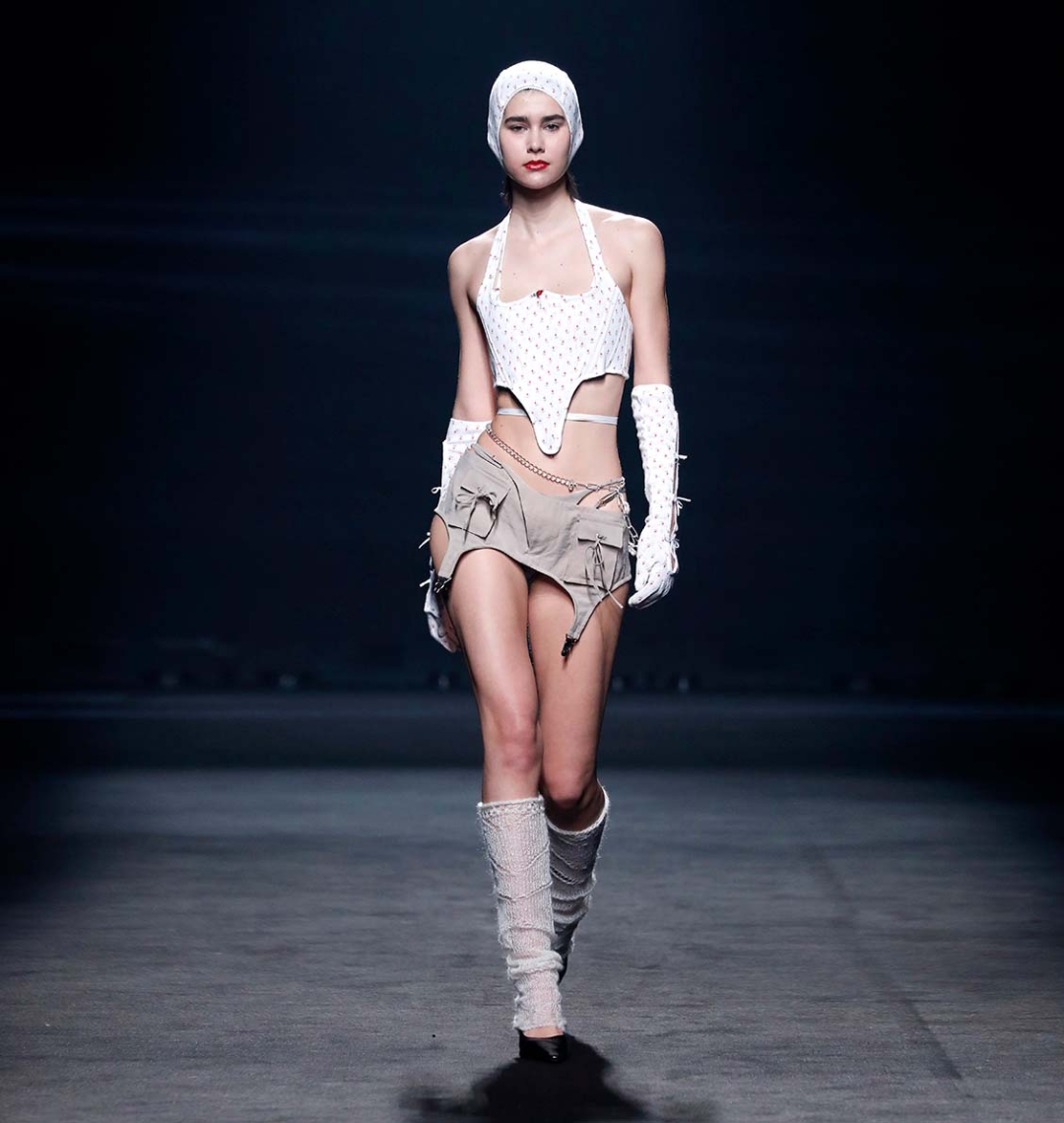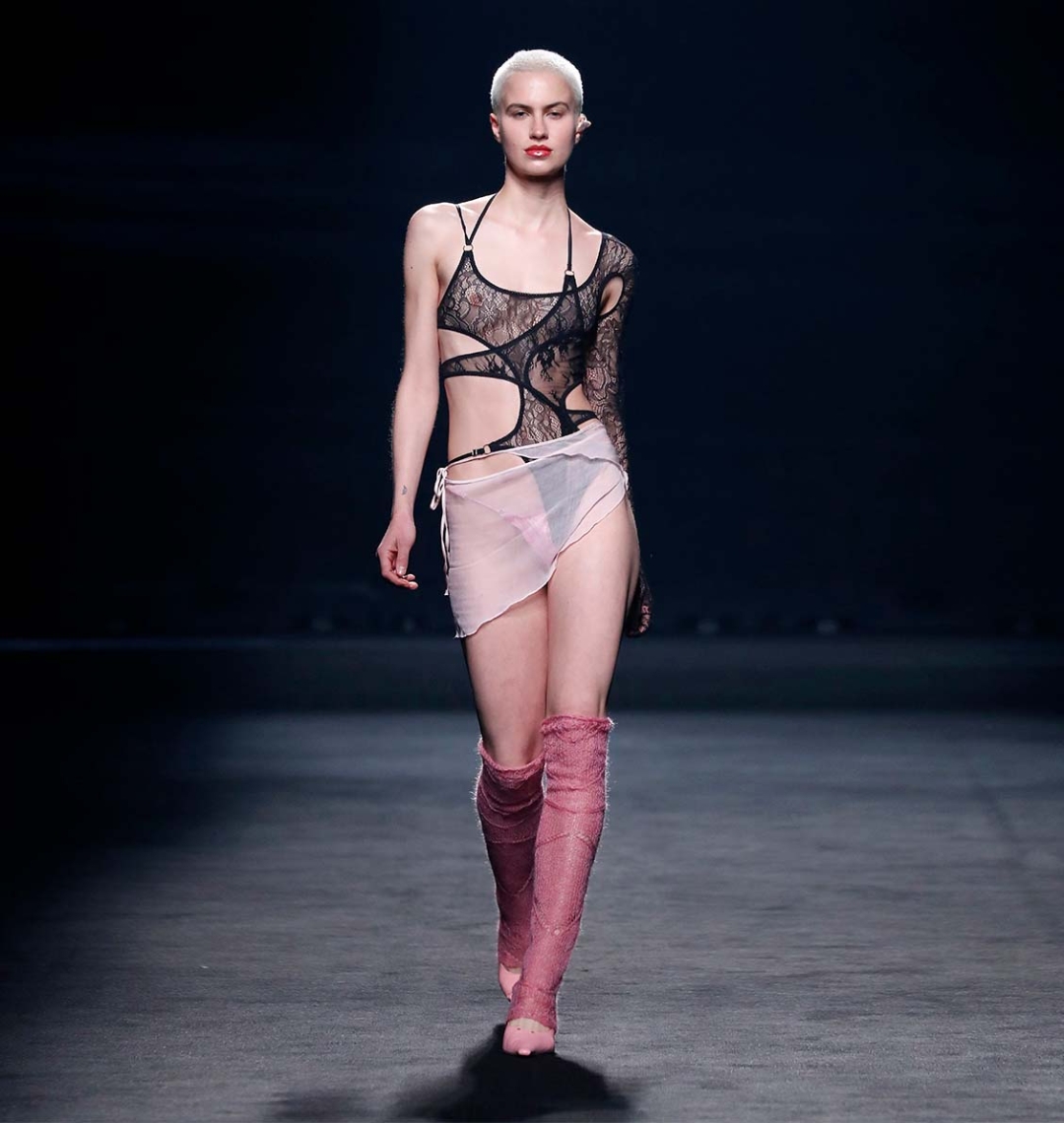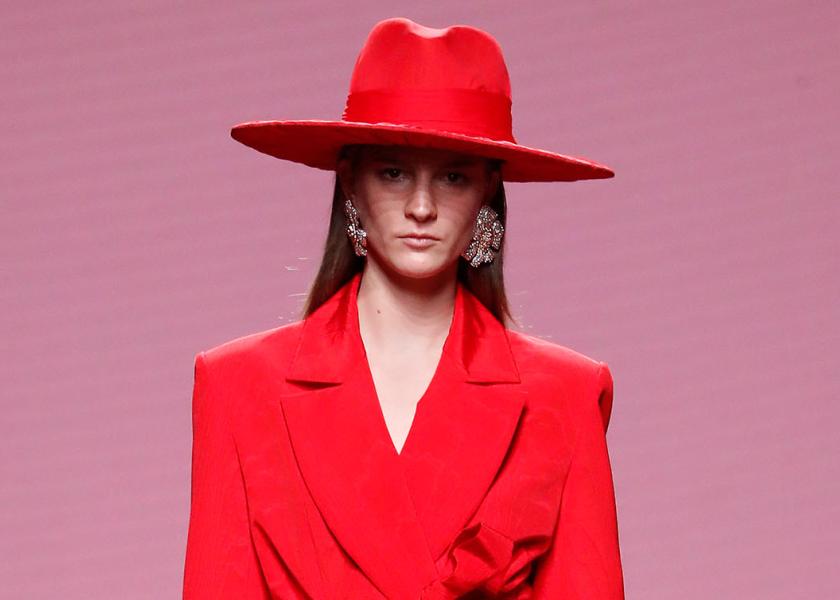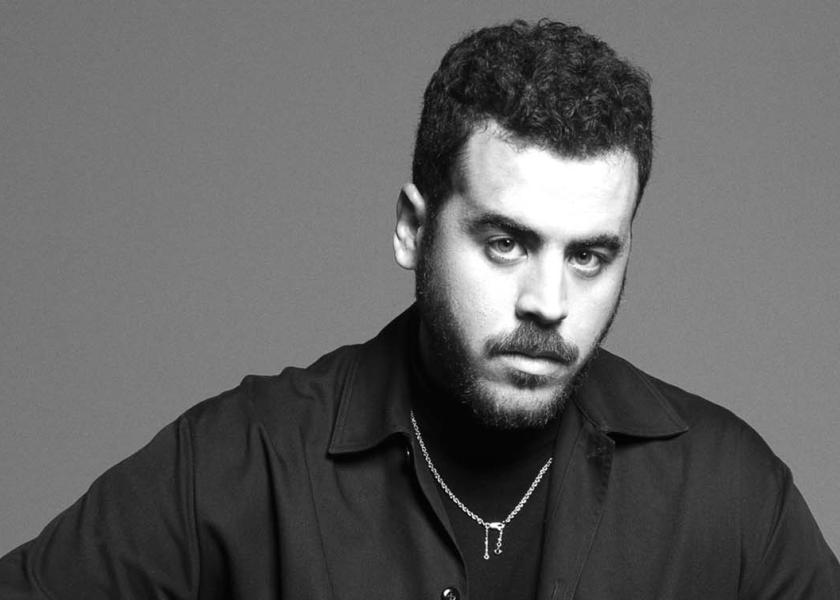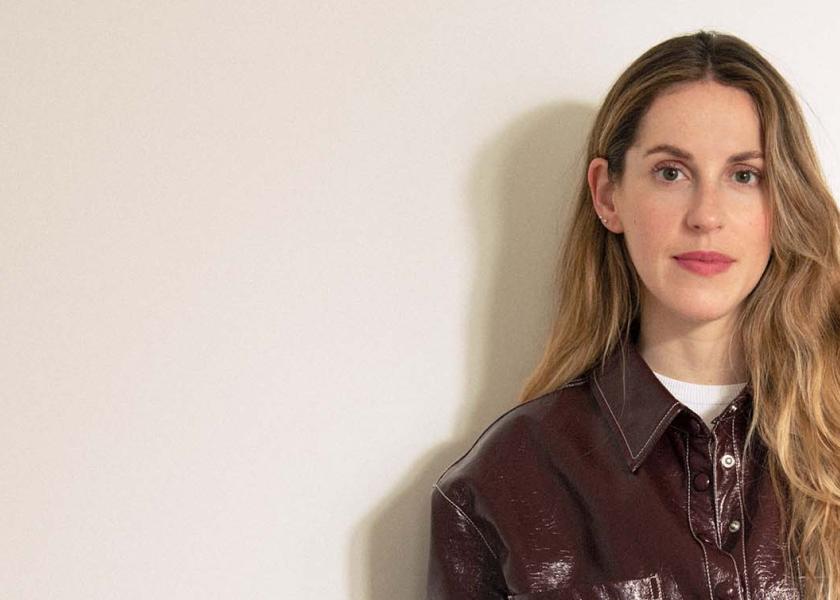Alejandre
Body of desire
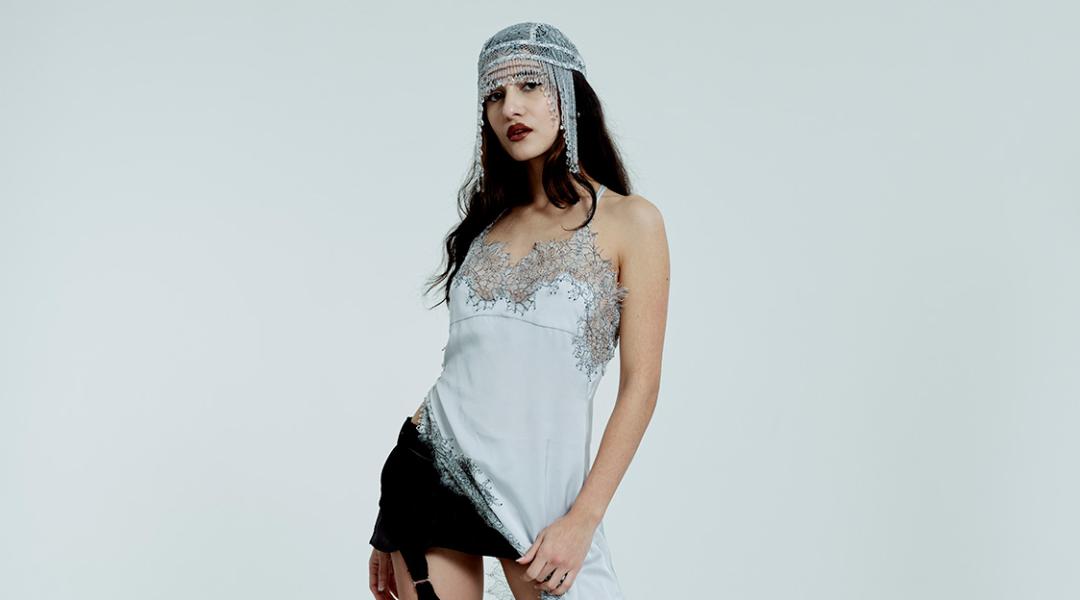
Defending the body’s sensuality far from political correctness. From this perspective, emerging brand Alejandre defends female empowerment and breaks the taboos associated to silhouettes. Corsets, bodies, nightgowns, bras, thongs, and all kinds of pieces inspired by lingerie take centre stage and have already been worn by celebrities such as Dua Lipa, Nathy Peluso, or Bad Gyal.
Sandra Peñaranda (Madrid, 1996) started her own female clothing revolution from her home during lockdown in 2020. After mandatory lockdown was instated, she decided to invest her time in Alejandre, a brand that presented its second collection at EGO runway, a space dedicated to young fashion talent within the 75th edition of MBFWM, which promotes body empowerment through lingerie. “For us, it plays a distinguishing role. We always focus on outerwear, but I want underwear to be on the outside,” declares the designer. So, her designs converse with the silhouette through sensuality and sexuality, without taboos or censorship. Regaining freedom showing the body through desire is the idea through which Alejandre presents itself to the world.
The lockdown due to the pandemic made you pour all your talent into Alejandre; at the time, did you think that your collection would reach the likes of Dua Lipa?
Not at all! I started the project with no expectations. At the time, I was working at another studio, but it closed due to lockdown, so I started Alejandre to keep myself busy. I had the brand idea in mind for some time, I started slowly, and it took shape until the collection was released. I launched the campaign through Instagram and a magazine to reach more people, but I never thought that I could dress artists like Dua Lipa. I thought that happened when you were more established, but with Instagram, if people like what you do, it soon crosses the pond.
What has participating in EGO with your second collection, Beauty Body, meant for the brand?
Above all, a larger impact. Now we’re about to launch the collection online, and that’s where we’ll see if the idea and style reach people. Since presenting it at EGO, those who didn’t know us have approached us and asked for our lookbook. For now, we receive the same orders, perhaps from more artists.
“I never thought that I could dress artists like Dua Lipa, but with Instagram, if people like what you do, it soon crosses the pond”
Both Beauty Body and Alejandre 2020 are strongly inspired by the style of the 2000s; what fascinates you about that era, and who are your icons?
The 2000s where a time without filters or boundaries, where everything was more eccentric and that’s the part I like the most. But, for me, the most important aspect is the idea of taking lingerie to the foreground. Those deep-plunging shirts that revealed your bra or those skirts that were so short or low-waisted you could see your knickers. We’re experiencing a revival of all that. I think that’s what fashion is all about, daring to wear outfits, whether they go together or not, it doesn’t matter. Regarding my icons, I grew up seeing music videos of Beyoncé, Britney Spears, Christina Aguilera, The Pussycat Dolls…
Will the 2000s continue to be an important part of Alejandre’s discourse?
They have been in the first and second collection. I think they were the excuse to start and have allowed me to continue acquiring an identity and shapes. Now I’m able to carry on along the same lines with other ideas and also move into other universes. The important thing is that I have codes so that, whatever I do, I will be recognised.
Beyond that decade, what else inspires your talent?
Absolutely everything. Colours, shapes, also music, but, above all, visual things, and that’s why I follow a lot of stylists. I’m constantly absorbing information, taking in ideas to see what I’m interested in, translate it, and bring it into my universe.
Your garments celebrate accepting all body types, do you think body shaming is still a problem?
Of course, saying otherwise would be dishonest. We’ve grown up with the idea that you need to have a certain figure to dress a certain way, but not at all. Each person can wear what they want, we’re just talking about garments and bodies, nothing more. What’s important is to accept it and dress how you want to express yourself. Personally, my discourse doesn’t focus on this, but I do include it in my designs.
Do you think showing skin can become a campaign to help break stereotypes?
It’s not so much about showing skin, but rather dressing yourself regardless of who’s looking. In the case of legs, for example: there are many types, but only some can wear short skirts? Or wearing close-fitting clothing... If that’s my style and I like dressing like that, there’s no need to change because someone else doesn’t like it. It’s about the wrong mentality that we’ve grown up with, we’ve been taught imposed beauty standards.
“If that’s my style and I like dressing like that, there’s no need to change because someone else doesn’t like it. We’ve grown up with imposed beauty standards”
Do you think the idea of sensuality and sexuality changes when conceived by a completely female gaze?
When you see a collection, you don’t think about who’s behind it. Perhaps it’s a message you receive intuitively. Lingerie is extremely important for the brand and we’re constantly externalising it. If it’s a garment that’s been pushed to the background and can be as beautiful as outerwear, why not bring it to the forefront and even give it the leading role? In our collections I try to defend the female body from a delicate point of view, sometimes it’s more sexual, but never explicit.
What scenarios or circumstances are your pieces designed for?
Our garments are designed for whoever wants to wear them. When? They decide. When I start to create, I don’t focus on a moment, but rather on a character, a colour range, shapes... Sometimes I surprise myself because I think: “I see this for an event”, but then they use the piece for everyday wear, and I love that. It means that you feel so identified with it that you make it part of your day-to-day life.
What are the brand’s upcoming projects?
Above all, starting to sell the collection. We still don’t know if we’ll walk the runway again. After this experience, we’ve learnt so much, both from the good and the bad, and we’re proud of what we’ve done. The response has been great, but we want next time to be even better. It’s an intense exercise that requires time and financial resources... We’re open to anything, but we still can’t confirm.
